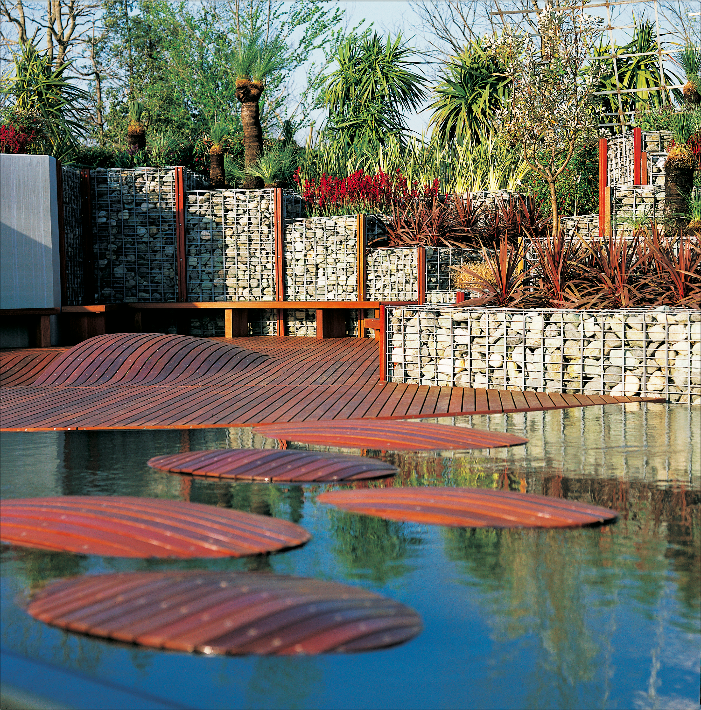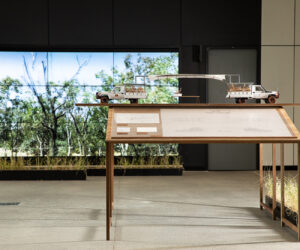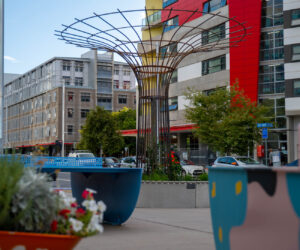Jamie Durie on designing sustainable landscapes
A self-professed “tree-hugger”, Jamie Durie is an environmental crusader with an unbridled enthusiasm for landscape architecture and sustainability. Ahead of his keynote presentation at Melbourne’s Green Cities 2018 conference, Durie divulged his philosophy and shared his forecast for the future of landscape design.
What are your design values?
… I studied landscape architecture and horticulture [in] my late twenties, early thirties for four years and I guess that formed the rudiments of my design backbone, if you like. I would start by best explaining that it’s about bio-mimicry. It’s about looking at the successes that nature has delivered to us and how we can best benefit from the engineering, the aesthetics, the colour – everything about it. You can never mimic nature, but you can certainly take leadership from it. That’s what I do.
[I did a] table for an exhibition called Local Design in Milan and the table was based off a pandanus root, it’s called a screw pine. This pandanus has these twisting leaves that follow [themselves] around all the way to the top and as it starts to sprout its arms out it becomes very strong and it puts down these stabilising roots … to protect itself from the wind in the sand dunes. So I used that theory to support the table.
For me, it has got to be aesthetically pleasing and I think everyone is intrinsically connected to plants. It has got to be functional, it has got to be a piece of art and it has to, above all, be sustainably-sourced.
What are the main points of your Green Cities presentation?
I talk about the green revolution. Thirty years ago, there were architects and landscape architects and ‘never the two shall meet’. The architect did his job, and then the landscape architect came in afterwards and feathered up what was left over, basically. Now, it’s about true collaboration and I think there’s a much deeper respect for the landscape architectural industry. I think that has been born out of necessity, because suddenly everyone’s starting to fall in love with their own backyards again and in turn their communities … their neighbourhoods and … the planet. [People] want to know how they can best serve the planet by creating sustainable gardens that are meaningful, that are truly integrated into the buildings.
The second key driver is pure commercial marketing. Whether you like it or not, there are green benefits [from] creating a green building, and this is what I call CRM: that’s ‘cause related marketing’. People all over the world now are starting to realise that if they put a vertical garden on the exterior of their high-rise, it makes them look conscious and they sell apartments faster.
The industry is now just responding to what the market wants and [it wants] sustainable, conscious developments.
How can sustainability be prioritised in landscape design?
First and foremost [through] an intelligent plant selection. It has to be a water-wise plant selection; you’ve got to make sure that the soils respond to what the plant’s needs are. It’s about soil structure, it’s about the absorption of nutrients, water and the transport system. So, to break it down very simply: soil is like a highway that transports all four of those elements that plants need. … There are irrigation systems now with moisture control devices where … it only waters when the soil requires it to water so you’re not overwatering.
It’s also about mulching which is like putting nature’s blanket over the soil. You wouldn’t tear a blanket off a six-year-old child in the middle of the night, so don’t take mulch off the soil! [That’s] what I say to people.
It takes 100 years to develop one inch of topsoil and it can all wash away in one heavy rain. An intelligent drip water system that sits underneath the mulch is the most effective way because then you’re not spraying it off into the distance and evaporating water.
[But] where does that water come from? …It should be drip emitters that only come on when the soil reaches dry point or a point when it needs it. In my opinion, every household in Australia should have a rainwater tank. Rain, hail or shine; no matter where they’re from. It’s incredible that we’re using potable drinking water, in this day and age … to water our plants! Meanwhile, we’re sending all of our stormwater out into our river ways and ocean ways choking our fish … and bleaching our coral.
What should happen is that we should have more permeable landscape. … I’ve just spent the last three years developing a permeable paver and we’re about to launch those. You won’t have a driveway that runs water off anymore. That driveway will actually soak water and you’ll grow turf or plants out of all the little gaps so you get a green driveway that doesn’t get any runoff.
What trends do you forecast in the near future for landscaping?
We shouldn’t be mining steel or iron aggregate to put in our concrete, we should be using things like fly ash. And we’re only just starting to learn about that stuff now. There are hundreds and hundreds of tonnes of landfill that could be converted into aggregate and I think we’ve got to get a bit better at that.
There are hemp bricks now, they’re amazing. Rammed earth is starting to become a lot more accessible now, and cheaper. It’s drilling down on the materials that we look to when we build a building – developers, I think, need to be forced to innovate. That’s where I think we need to go.



